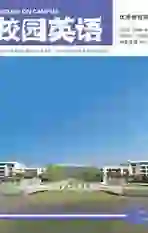Lin Yutang’s Aesthetic Orientation and his Translation Thematization
2017-02-04韦茁
韦茁
【Abstract】The present thesis is an attempt to examine Lin Yutangs Aesthetic Orientation and its embodiment in his translation thematization.
【Key words】Aesthetic orientation; translation thematization; harmony.
I. Lin Yutangs Aesthetic Orientation
Roman Rolands celebrated dictum “Harmony is my lifelong dream” can be used to describe Lin s lifelong aesthetic pursuit, as he once wrote: “In my view, the acme of culture would be nothing but to make everything in life agreeable with each other, as harmonious as the water and the sky blending into a whole azure”.
Lin s aesthetic orientation for “harmonization” can be attributed to his long immersion in both Western and Chinese culture. Lins father was a Presbyterian pastor and Lin had received Western education ever since his childhood though he grew up in China, and then he studied and lived in the West for most part of his life. The impact of Western culture on him was profound and permanent. In the West, “harmony” has been the earliest definition of beauty, and can be traced back to the ancient Greek mathematician Pythagoras who put forward the concept “Golden Section”, and claimed that harmony or good proportion could produce a sense of beauty. Lin eulogized this harmony and good proportion as the acme of perfection of life. With this notion of beauty, he translated and introduced Oscar Wildess work Glamour in China, for its core is that “ in the first place is put the pursuit of spiritual life and the harmonious elegance of arts”.
Lin s aesthetic orientation for harmony was also attributed to the influence of the Chinese traditional culture. He held that Yan, or humanity, was based on the harmonization of human inner- self and the morality of the universe(林语堂,1995:165-166) And he perceived moral harmony as the basis of political harmony, and the harmonious love between men and the harmony of various social relationships as the symbol of the ideal social order. While the Taoist ideas of returning to nature and the harmonious co-existence between man and nature were the thoughts Lin had identified himself with throughout his life.
II. Lins Translation Thematization
Lins Aesthetic Orientation was embodied in both his thematization and practice of his translation.
As far as translation theories are concerned, Lin held that “faithfulness” in translating literary works referred to the harmonious unity of the conveyance of both the content and the style of the original. In order to achieve this aim, the translator should first of all have a thorough understanding of the “total image”, the “style” and the “charm” of the source text. Then the translator might set to employ the “sentence-for-sentence translation” to transfer the whole text, in accordance with the grammar and the manner of writing of the target culture, so as to achieve the harmonious unity of “beauty of sound”, “beauty of image”, “beauty of feeling-tone”, “beauty of style” and “beauty of form”(林语堂·论译诗[A]).He continued to claim that “faithfulness” was only an ideal for the translator to pursue, while “expressiveness” was the basis of beauty. In terms of language, Lin Yutang advocated the “sentence-for-sentence translation method” in conformity with the target grammar , while in terms of the content, Lin emphasized the conveyance of “feeling –tone” hence the conveyance of the beauty of the source text. Therefore, The translation standard Lin put forward is essentially a standard of beauty and the core of this aesthetic translation is the harmonious unity of the conveyance of beauty both in the form and the content of the original .
Yet Lin also pointed out that it was impossible to achieve absolute faithfulness to the original, which should only be an ideal for the translator to pursue. He therefore classified translation into four types in view of the scale of faithfulness to the original, namely, mechanical translation, literal translation, free translation and random translation. Literal translation, if carried to extremes, would result in mechanical translation; whereas free translation reaching an extreme degree would end in random translation. Both extremes should be avoided. In light of his criticism of the two misconducts in translation, it is not difficult to see that LinYutang advocated a middle-in-the-way attitude in translation, i.e., the harmony between the faithfulness to the original and the faithfulness to the readership.
References:
[1]Lin Yutangx.The Importance of Living.Beijing: Foreign Language Teaching and Research Press.2003
[2]郭建中.文化与翻译[M].北京:中国对外翻译出版公司.2000.
[3]金缇.等效翻译探索[M].北京:中国对外翻译出版公司,2000.
[4]林语堂.林语堂名著全集·辉煌的北京[M].长春:东北师范大学出版社.1995.
[5]林语堂.林语堂名著全集·论翻译[M].长春:东北师范大学出版社,1995.
